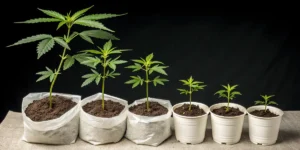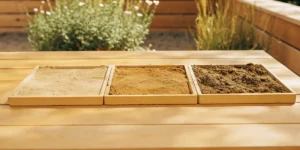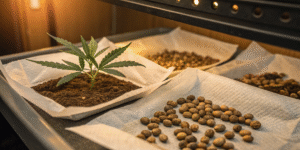Monkey Grease is a popular cannabis strain known for its potent effects and unique aroma. Cultivating this strain requires attention to detail and a careful approach to environmental conditions and growing techniques. Whether you’re a beginner or an experienced grower, this guide will help you achieve optimal results with Monkey Grease cannabis plants.
Start by selecting high-quality Monkey Grease seeds from a reputable breeder. Proper seed selection plays a critical role in the success of your grow, ensuring the genetic potential of the strain is fully realized. Once you have your seeds, germinate them using your preferred method, such as the paper towel technique, to ensure healthy and vigorous seedlings.
Once germinated, transplant the seedlings into a suitable growing medium. Monkey Grease thrives in well-aerated soil or a hydroponic system, both of which should be rich in nutrients. Ensure the pH level is between 5.5 and 6.5 to promote nutrient uptake. Regularly check the soil or nutrient solution to maintain this balance.
Lighting is one of the most crucial elements in cannabis cultivation. Generally, Monkey Grease requires a robust lighting setup. During the vegetative stage, provide 18 to 24 hours of light per day. Transition to a 12-hour light schedule as you approach the flowering stage. Using LED or HPS lights will help optimize growth and energy efficiency.
Maintaining a stable environment is key to the successful cultivation of Monkey Grease. Keep temperatures between 70°F and 85°F, with humidity levels around 40% to 60%. Use oscillating fans and exhaust systems to promote air circulation and prevent mold or mildew, particularly during the flowering stage.
Feeding your plants properly is vital. Use nutrient formulas specifically designed for cannabis, with a balanced nitrogen, phosphorus, and potassium ratio during the vegetative stage. Adjust the formula to higher phosphorus and potassium ratios during the flowering stage to enhance bud development.
Monitor your plants closely for any signs of pests or nutrient deficiencies. Regularly inspect the leaves and stems, and employ organic pest control methods to avoid chemical residue. Be proactive in addressing issues to prevent them from escalating and impacting your yield.
The flowering period for Monkey Grease usually lasts around 8 to 10 weeks. As harvest time approaches, monitor the trichomes using a magnifying glass. Harvest when trichomes shift from cloudy to amber for optimal potency. Dry and cure the buds slowly to enhance flavor and aroma.
Monkey Grease Strain Overview: Traits, Effects & Genetics
The Monkey Grease strain, known for its tantalizingly unique name and profile, is a prized hybrid in the cannabis community. This strain is highly regarded for its excellent balance of both indica and sativa characteristics, though it leans slightly more towards the indica side. One of its standout traits is its robust aroma, which combines earthy undertones with hints of citrus and spice, easily capturing the interest of cannabis connoisseurs. Its dense buds are usually a vibrant green, covered in a thick layer of trichomes that give them a greasy, sticky texture, justifying its quirky name. As a strain, Monkey Grease is highly sought after both recreationally and medicinally.
In terms of effects, Monkey Grease is celebrated for delivering a powerful and long-lasting high that users find both mentally stimulating and physically relaxing. Upon consumption, users often experience an initial cerebral rush that enhances creativity and sociability, making it an excellent choice for social gatherings or artistic endeavors. As the high progresses, the indica aspects of Monkey Grease begin to manifest, providing a comforting body buzz that eases tension and may lead to sedation at higher doses. This dual-action impact makes it a versatile strain suitable for both daytime use in moderate amounts and evening relaxation in larger quantities.
From a genetics perspective, Monkey Grease boasts an interesting lineage. Although details can vary depending on the source, it is generally agreed that it originates from crossing potent parent strains, including Gorilla Glue 4 and Grease Monkey. Gorilla Glue is renowned for its trichome-laden buds and heavy-handed relaxation effects, while Grease Monkey is praised for its sweet flavor and calming properties. This genetic composition imbues Monkey Grease with its rich aromatic profile and comprehensive hybridized effects. As a result, it appeals to a wide range of users, from novices seeking an entry point into hybrid strains to seasoned aficionados looking for a robust, energizing, yet calming experience.
Optimal Environment to Grow Monkey Grease Successfully
Monkey Grease, a strain acknowledged for its robust aroma and potent effects, requires a well-calibrated environment to achieve maximum cannabis yield and quality. Cultivating this strain begins with selecting an appropriate space that can accommodate its growth needs. Consider a growing area with sufficient space for the plant’s expansion, typically requiring a minimum of four square feet per plant. This allowance ensures each plant receives ample light and air circulation, both crucial for strong, healthy growth.
Maintaining optimal temperature and humidity levels is critical when growing Monkey Grease. These plants thrive in a temperature range between 68°F to 77°F (20°C to 25°C) during the day. Nighttime temperatures should ideally be about 10 degrees cooler to mimic the natural environmental conditions that cannabis plants prefer. Relative humidity (RH) should be kept between 40% and 50% during the vegetative stage, dropping to around 30% to 40% during the flowering stage to prevent mold and mildew, which can devastate cannabinoid and terpene production.
Effective lighting is another critical factor in achieving success with Monkey Grease. This strain benefits from high-intensity lighting, ideally from LED grow lights or high-pressure sodium lights, which replicate the full spectrum of natural sunlight. During the vegetative stage, plants require 18–24 hours of light per day, shifting to a 12-hour light cycle during the flowering phase. Ensuring that the light source is positioned correctly above the canopy can help optimize photosynthesis without causing light burn.
Soil quality, nutrients, and pH levels also significantly impact the successful cultivation of Monkey Grease. Select a well-aerated, nutrient-rich soil blended with components like perlite or vermiculite for better water retention and drainage. Throughout its growth cycle, this strain requires a balanced mix of macronutrients (nitrogen, phosphorus, and potassium) and micronutrients. Additionally, maintaining a soil pH level between 6.0 and 7.0 will promote nutrient availability and absorption, ensuring the plant develops robustly.
Finally, monitoring and adjusting CO2 levels can further enhance growth. Increasing CO2 concentrations in the grow area can significantly boost production by improving photosynthetic efficiency, especially during the flowering phase. However, growers should ensure good ventilation to prevent potential adverse effects from excessive CO2. By fine-tuning these environmental factors, growers can optimize the growth conditions for Monkey Grease, ensuring healthy plants and superior bud quality. Through careful planning and environmental control, Monkey Grease can be cultivated successfully, reflecting both the time invested and the strain’s potential.
Grow Room Setup for Monkey Grease Plants
Setting up an ideal grow room for Monkey Grease plants requires attention to detail to ensure that these cannabis plants thrive. Begin by selecting a location that offers both privacy and efficiency in space. A spare room, closet, or a dedicated grow tent can serve this purpose well. Ensure that the space is clean, dry, and insulated to maintain a stable environment. It’s critical to create a space that allows easy access to all plants for maintenance and monitoring while ensuring that environmental conditions such as temperature, light, and humidity are efficiently managed. This will set the foundation for healthy plant development.
Lighting is a crucial component in the grow room setup for Monkey Grease plants. Since these plants require a significant amount of light for optimum growth, investing in high-quality grow lights such as LED, HPS, or CMH can make a significant difference. Position the lights to provide uniform coverage over the canopy and maintain the recommended distance from the plants to avoid burn and allow sufficient light absorption. Additionally, a timer system is essential to automate the light cycle, providing a consistent photoperiod that mimics the plant’s natural environment, typically 18 hours of light and 6 hours of darkness during the vegetative stage.
Managing environmental conditions is another critical step in setting up a grow room for Monkey Grease. Aim to keep the temperature between 70-85°F (21-29°C) and humidity between 40-60% during the vegetative phase. Installing an HVAC system can be invaluable for controlling temperature and humidity levels. An oscillating fan will help circulate air, preventing mold and pests, while carbon filters can be used to manage odors. It’s also crucial to regularly monitor pH levels and nutrient concentrations in the growing medium, as these factors are pivotal in preventing nutrient deficiencies and ensuring robust growth.
Furthermore, setting up an efficient watering system is integral to the growth of Monkey Grease plants. Employ a drip irrigation system or schedule regular manual watering sessions, ensuring the growing medium remains moist but not waterlogged. The water should be at the correct pH level, typically between 6.0 and 6.5, to facilitate nutrient uptake. Consider investing in a water filter to ensure the purity of water used, free from harmful contaminants or excessive chemicals.
Finally, ensure security and discretion within your grow room. Implement measures such as locks and curtains to conceal your grow operation from outsiders. Maintaining a secure setup not only safeguards your investment but also ensures compliance with local laws and regulations regarding cannabis cultivation. By considering each of these elements in your grow room setup, you can establish an optimal environment for Monkey Grease plants to thrive, leading to healthier plants and a more fruitful harvest.
Indoor Growing Tips for Monkey Grease
Monkey Grease is a potent cannabis strain known for its unique terpene profile and high yields. When cultivating Monkey Grease indoors, growers should pay attention to achieving the optimal environmental conditions to ensure the plant’s potential is fully realized. One critical element is maintaining the temperature between 70-80°F (21-27°C) during the day and slightly cooler at night, which can influence the plant’s growth rate and bud development. Monitoring humidity levels is equally important, as Monkey Grease prefers a range of 40-50% during its flowering stage to prevent mould or mildew.
Lighting plays a vital role in the indoor cultivation of Monkey Grease. High-Intensity Discharge (HID) lamps or LED grow lights are recommended as they provide the appropriate spectrum and intensity needed for robust growth. Position the lights around 18-24 inches above the canopy and adjust as needed to prevent light burn while ensuring adequate light penetration. It’s also advantageous to implement a lighting schedule of 18 hours on and 6 hours off during the vegetative stage, switching to 12 hours on and 12 hours off to trigger flowering.
Another crucial aspect is the growth medium and feeding regimen. Monkey Grease thrives in well-aerated soil or hydroponic systems; coco coir is a popular choice for hydro setups due to its excellent water-retention properties. When it comes to nutrients, opt for balanced, high-quality fertilizers that supply all necessary macro and micronutrients, adjusting the Nitrogen-Phosphorus-Potassium (N-P-K) ratios to suit the plant’s growth stage. Regularly check the pH of the water and nutrient solution, keeping it between 5.8-6.5 to ensure optimal nutrient uptake.
Training techniques can also enhance yield and maintain plant health. Implementing Low-Stress Training (LST) or the Screen of Green (SCROG) method can help maximize light exposure and airflow to all parts of the plant, promoting even growth and preventing pest issues. Regularly pruning lower branches and leaves enhances air circulation and reduces the risk of mould development. When cultivated with attention to these details, Monkey Grease can deliver remarkable results for indoor growers.
Outdoor Growing Tips for Monkey Grease
Growing Monkey Grease outdoors can be a rewarding endeavor if you follow a few essential tips to maximize its genetic potential. This hybrid strain is known for its robust growth and vibrant potency, but achieving optimal results requires an understanding of its needs. Begin by selecting a location with plenty of direct sunlight; ideally, your plants should receive at least six hours of sun per day. Ensuring your site has good sun exposure will help in developing cannabinoid-rich flowers.
The soil quality is another crucial factor for growing healthy Monkey Grease plants. This strain thrives in nutrient-rich, well-draining soil. Consider preparing your soil with organic compost or well-aged manure before planting to provide a natural balance of nutrients. Ensuring proper soil aeration will also encourage healthy root development. Regularly check the pH levels, aiming for a range between 6.0 and 6.5 to avoid nutrient lockout.
Watering is an aspect that requires careful attention. While it’s important to keep the soil consistently moist, overwatering can lead to root rot, especially in outdoor settings where humidity and rain can fluctuate. Early in the day is the best time to water your plants, as this allows moisture to be absorbed before the evening’s drop in temperature, reducing the risk of mold and mildew forming on your plants.
Pest management is a necessary practice to keep your Monkey Grease plants healthy. Outdoor environments often expose plants to various pests such as aphids, spider mites, and caterpillars. Implement preventive measures by using companion planting and natural insect repellents. Regular monitoring will help detect any issues early, allowing for swift management before pests cause significant damage.
Lastly, outdoor growing success depends on monitoring temperature and humidity levels. Monkey Grease prefers temperatures between 70°F to 85°F (21°C to 29°C) during the day, with cooler temperatures at night. Ensure your plants are adequately spaced for good airflow, which helps control humidity and prevent diseases. By carefully managing these factors, you can look forward to a healthy outdoor grow of Monkey Grease with a bountiful harvest.
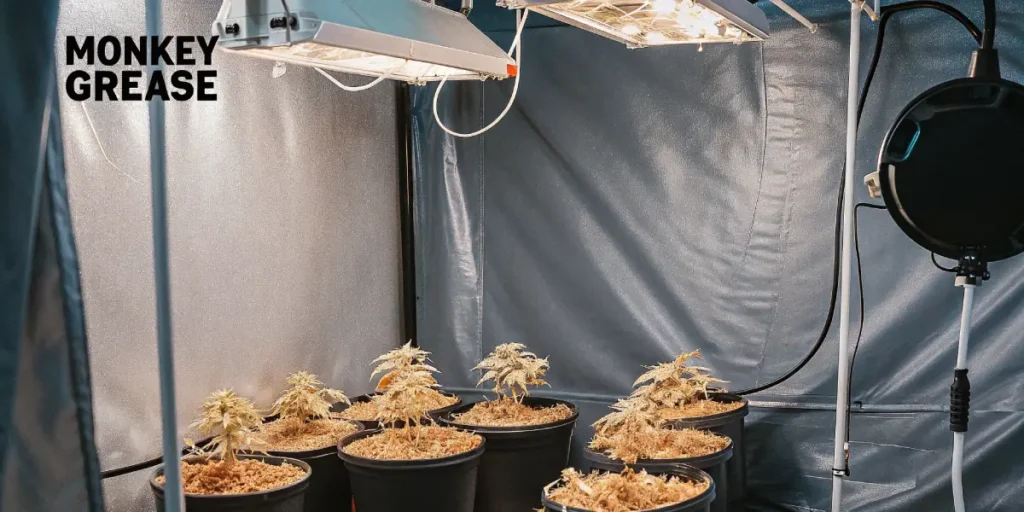
How to Germinate & Propagate Monkey Grease
Monkey Grease, a popular cannabis strain, is cherished for its unique aroma and potential therapeutic effects. Germinating and propagating Monkey Grease requires careful attention to detail to ensure a successful growing cycle. The initial step in this process is to select high-quality seeds from reputable suppliers. Start by examining the seeds for viability; healthy seeds are usually hard and dark with a mottled shell. Subpar seeds might be immature or pale, leading to lower germination rates.
Once you’ve secured viable seeds, the germination process can commence. A straightforward method involves the use of the paper towel technique. Place the seeds between two damp paper towels and enclose them in a plastic Ziploc bag to retain moisture. Store the setup in a dark, warm place, ideally within temperatures of 70-80°F (21-27°C). Check the seeds daily and mist the paper towels with water to keep them from drying out. Within 24-72 hours, the seeds should start to sprout taproots, indicating successful germination.
After the taproots have emerged, Monkey Grease seedlings are ready to be transferred to a growing medium. For optimal results, consider using a nutrient-rich, sterile soil or a hydroponic system. Make a small hole and gently place the sprouted seed with the taproot facing down. Cover it lightly with soil and water it lightly to maintain necessary moisture. Keep the medium consistently moist but not waterlogged to avoid root rot. The seedlings should be receiving 18-24 hours of light, promoting robust growth during this crucial phase.
The propagation phase requires maintaining optimal conditions for healthy vegetative growth. Provide adequate lighting, typically using LED or fluorescent lights designed for plants. Monitor temperature and humidity levels within the grow area, ideally maintaining 70-85°F (21-29°C) and a relative humidity between 40-60%. As the seedlings develop into stronger plants, gradually introduce nutrient-rich fertilizers, following exact dosage recommendations to prevent nutrient burn.
Transplant the Monkey Grease plants into larger containers or outdoor areas once they are substantial enough to handle the transition. Handle the root system delicately, ensuring minimal stress during the move. With attentive care throughout germination and propagation stages, Monkey Grease can flourish, offering robust plants that will eventually yield bountiful harvests characteristic of this distinct cannabis strain.
Vegetative Stage: Nurturing Your Monkey Grease Plants
The vegetative stage is a crucial period in the life cycle of your monkey grease plants. During this phase, the plants focus on developing strong stems and lush foliage, which are essential for a bountiful harvest. This stage typically lasts between 4 to 8 weeks, depending on the growth conditions and genetics. Monkey grease, known for its robust growth and resilience, demands certain care practices to ensure optimal development. Providing adequate lighting, nutrients, and water ensures your plants are healthy and ready for the flowering phase.
Adequate lighting is paramount during the vegetative stage. Monkey grease plants require at least 18 hours of light per day to encourage vigorous growth. Using high-quality LED or fluorescent lights can provide the necessary spectrum for optimal plant health. The intensity and distance of the light should be carefully monitored to prevent issues such as leggy growth or light burn. Additionally, maintaining a stable temperature between 70-85°F (21-29°C) and a relative humidity of 40-70% will create an optimal environment for your plants.
Nutrition plays a vital role in the vegetative stage, as it sets the foundation for healthy plant development. Providing a balanced nutrient solution high in nitrogen will support the growth of robust foliage. It’s also beneficial to incorporate microelements such as magnesium and calcium to prevent deficiencies. Regularly checking the pH levels of your nutrient solution, keeping it between 5.5 and 6.5, ensures efficient nutrient uptake, reducing the risk of deficiencies or nutrient lockout.
Watering your monkey grease plants requires careful attention. Overwatering or underwatering can hinder growth and lead to plant stress. Ensure the growing medium is consistently moist but not waterlogged. Allow the topsoil to dry slightly between waterings to encourage root development and prevent root rot. Observing your plants for signs of wilting or drooping will help you adjust your watering schedule accordingly, fostering a more robust and resilient plant.
Pruning and training techniques can greatly benefit your monkey grease plants during the vegetative stage by promoting more even light distribution and increasing airflow, which can prevent mold and pests. Techniques such as topping, LST (low-stress training), and defoliation encourage bushier growth and increase the number of potential flowering sites. By taking proactive measures during this stage, you can maximize the plant’s potential and ensure a bountiful harvest.
Flowering Monkey Grease: What to Expect
Monkey Grease, a potentially robust and aromatic cannabis strain, enters an exciting phase as it begins to flower. During this stage, you will witness its transition from a vegetative state to the formation of dense buds. The flowering phase typically spans 7 to 9 weeks and is crucial for maximizing yield and potency. Expect to see changes in the plant’s nutrient needs and environmental conditions, as it will now require more phosphorus and potassium while reducing nitrogen intake. Monitoring these changes can help in promoting healthy flowering and optimal bud development.
In the flowering stage, the room’s lighting remains essential with a 12/12 light cycle, mimicking natural autumn sunlight patterns. This change in photoperiod will trigger bud production and allow the plant to focus its energy on flowering rather than vegetative growth. Expect your Monkey Grease plant to stretch significantly during the first two weeks of flowering, which may require additional support or strategic pruning to ensure it maintains a healthy structure. This phase is critical for determining the eventual size and quality of the harvest. Proper light management ensures dense and resinous bud formation.
As your Monkey Grease enters the mid to late flowering stage, expect a considerable increase in aroma and trichome production. The plant produces unique terpenes which contribute to its distinctive fragrance and flavor profile. The leaves may begin to show signs of color change, often towards purple or deep green, indicating the production of anthocyanins, especially in cooler temperatures. During this period, it’s important to maintain optimal humidity levels, ideally between 40-50%, to prevent mold and mildew growth which can compromise your crop. Regular inspection for pests and diseases should continue to maintain plant health.
Towards the end of the flowering period, expect the pistils to darken and the trichomes to turn milky white, signaling that your Monkey Grease is nearing its peak potency and is ready for harvest. Judging the right time to harvest requires careful observation of these signs and may vary slightly depending on personal preference for desired effects. Proper drying and curing of the harvested buds will further enhance their flavor and potency, bringing out the best characteristics of Monkey Grease. This final step is paramount for achieving the high-quality cannabis that experienced growers aim for.
Feeding Monkey Grease: Fertilizers & Nutrient Schedule
Growing Monkey Grease cannabis requires a keen understanding of its nutritional needs to maximize yield and potency. This strain, like many others, thrives on a balanced blend of macronutrients and micronutrients, which are essential throughout its growth phases. During the vegetative stage, Cannabis plants generally require fertilizers rich in nitrogen (N), which supports leaf and stem development. As this strain enters the flowering phase, a shift towards phosphorus (P) and potassium (K) dominant fertilizers can help in boosting bud formation and density.
Creating a detailed nutrient schedule helps in optimizing plant health and ensuring consistent growth. In the early vegetative stage, start with a quarter-strength nutrient solution to prevent nutrient burn. As the plants establish themselves, gradually increase to half strength, and eventually full strength as they mature. Introducing a balanced N-P-K fertilizer during this stage will support the robust vegetative growth that Monkey Grease needs. Monitoring pH levels is crucial, as a pH range of 6.0 to 7.0 ensures optimal nutrient uptake in soil, while a slightly lower range of 5.5 to 6.5 is ideal for hydroponic systems.
During the flowering stage, reduce nitrogen levels and increase phosphorus and potassium levels to encourage large, resinous flowers. Incorporating organic amendments such as bat guano or a potash-rich supplement will benefit the plant’s flowers. Hard water or nutritional supplements with calcium and magnesium (commonly found in Cal-Mag products) should also be introduced if you notice signs of deficiencies, which can often appear as yellowing of leaves or stunted growth.
Consistency is key in feeding Monkey Grease, and maintaining a regular feeding schedule is critical for avoiding nutrient lockout or deficiencies. Provide a flush of pure water every couple of weeks to help avoid salt buildup, which can disrupt nutrient absorption. Observing the plant closely and adapting the feeding schedule based on its specific needs will result in an abundant harvest of high-quality Monkey Grease cannabis.
Pest and Disease Prevention for Healthy Cannabis Plants
Growing cannabis, particularly the “monkey grease” strain, requires meticulous attention to prevent the onset of pests and diseases that can compromise plant health and yield. An initial proactive step is establishing a clean growing environment. This includes regularly sterilizing equipment, maintaining a clutter-free space, and ensuring optimal air circulation. A well-ventilated area deters mold and mildew, common afflictions in cannabis cultivation, by reducing humidity levels. Monitor these levels consistently using a hygrometer to ensure neither excessive moisture nor dryness affects the plants.
Implementing an integrated pest management (IPM) strategy is crucial for healthy cannabis plants. This should involve regular inspections for early detection of unwanted visitors such as spider mites, aphids, and whiteflies. Early identification allows for immediate action before infestations become severe. Introducing beneficial insects like ladybugs and predatory mites can naturally control pest populations without resorting to harmful chemicals. Additionally, maintaining plant health through proper nutrition will bolster their natural defenses, making them less susceptible to attacks.
Fungal diseases pose a significant threat to the “monkey grease” strain, thus preventive measures such as spacing plants adequately to avoid dense foliage which traps moisture are vital. Fungicides designed for cannabis can be used but must be applied cautiously to avoid any chemical residue that could affect the plant’s quality. Opting for organic solutions like neem oil can be effective and environmentally friendly. It is essential to stay informed about local regulations concerning pesticide use to ensure compliance and safety.
Lastly, rotating crops and periodically changing the soil can prevent disease build-up in the growing medium. This practice disrupts the life cycle of pests and pathogens that thrive in stagnant conditions. Regularly pruning lower leaves and dead material ensures good airflow and light penetration, reducing the chances of disease proliferation. By combining these approaches, cultivators can significantly enhance the health and efficiency of their cannabis grow, ultimately leading to robust plants capable of producing high yields.
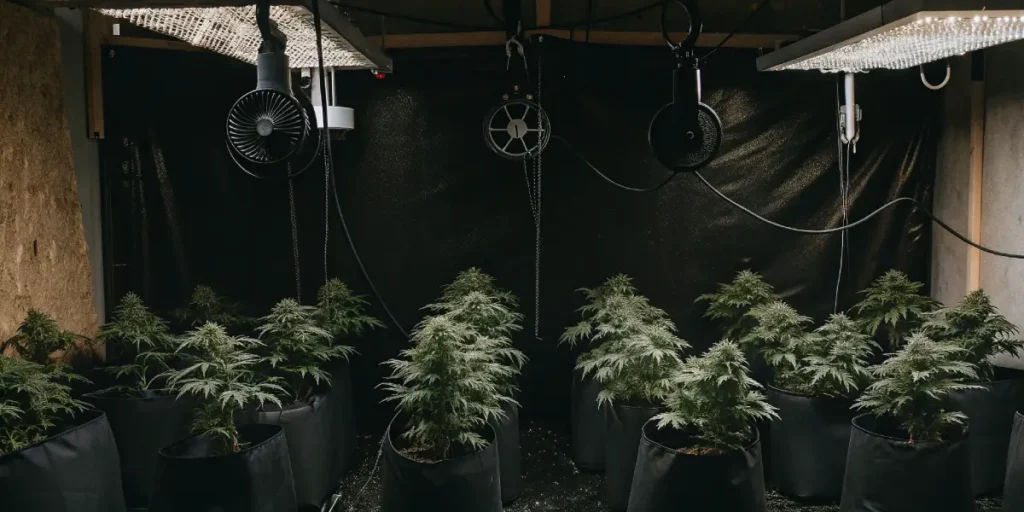
Harvesting & Drying Monkey Grease the Right Way
Harvesting and drying monkey grease, a unique and potent cannabis strain, is a crucial process that significantly impacts the final product’s quality. Harvesting should ideally take place when the plant’s trichomes are at their peak maturity, which is indicated by a change in color from clear to a milky white, often with a few turning amber. This represents the moment when cannabinoids and terpenes are at optimal levels. It is crucial to monitor the plants closely during this period, as over-maturing can lead to a degradation of these crucial compounds, reducing the strain’s potency and flavor.
When initiating the harvest, timing is not the only factor to consider; the time of day also plays a significant role. Early morning cutting is recommended when the plant’s essential oils and terpene profiles are the richest. Careful handling of the plants is paramount in preserving these delicate compounds. Ensure that you have sharp, clean scissors for cutting and be gentle to avoid damaging the buds. Once the plants are cut, it’s beneficial to remove large leaves and excess branches to promote efficient drying.
Drying the harvested monkey grease strain properly is critical for enhancing its flavor, aroma, and effects. The drying area should be a well-ventilated space with an optimal temperature of 60-70°F (15-21°C) and a humidity level around 50-60%. Hang the trimmed plants upside down to allow for even drying and avoid bundling to ensure airflow around each part. This process usually takes 7-14 days, during which the outer parts of the buds should become crisp while the stems remain slightly flexible. By achieving the right dryness level, the monkey grease strain retains its potency and prevents mold development.
After drying, the curing process further enhances the quality of monkey grease. Place the dried buds in airtight jars, opening them periodically to release moisture for the first couple of weeks. This gradual process helps in developing a smoother smoke and intensifying the strain’s natural flavors. Properly cured monkey grease can be stored for extended periods without significant loss of potency, making it crucial for maintaining the quality and ensuring a superior experience for users. Following these meticulous harvesting and drying steps ensures that the monkey grease strain delivers its full potential.
Monkey grease Strain Type: Indica, Sativa or Hybrid?
The monkey grease strain has garnered attention within the cannabis community for its unique characteristics and potent effects. This strain is classified as a hybrid, offering a balanced blend of Indica and Sativa genetics. Hybrid strains like monkey grease are particularly appealing for those seeking the best of both worlds, as they often combine the relaxing effects typical of Indicas with the uplifting and energizing effects associated with Sativas. Understanding this balance is crucial for growers and consumers alike, as it can influence both cultivation techniques and anticipated effects.
Monkey grease as a hybrid brings forth a depth of versatility that benefits a wide spectrum of cannabis users. The hybrid nature allows for tailored experiences depending on the phenotype, which can lean more towards the relaxing, couch-lock tendencies of an Indica or the cerebral, creative stimulation of a Sativa. This makes it a fantastic choice for breeders and consumers who may wish to select strains based on nuanced personal preferences. The genetic diversity of monkey grease ensures that it can be cultivated to suit a range of desired effects, whether recreational or medicinal.
From a cultivation standpoint, the hybrid nature of monkey grease requires growers to pay close attention to its growing environment. This strain thrives when given balanced care, reflecting its mixed genetic heritage. The growth patterns and foliage density might exhibit traits of both Sativa’s tall, lanky stems and Indica’s bushy, dense structures. By understanding its hybrid characteristics, growers can tweak their approach, whether it be in adjusting lighting conditions or optimizing nutrient feed, to maximize yield and potency.
Ultimately, identifying monkey grease as a hybrid is essential for setting expectations both in cultivation and usage. Individuals looking for cannabis that offers flexibility and variety will find the hybrid characteristics of monkey grease particularly attractive. The balanced effects mean that it can be used effectively at different times of the day, making it an excellent addition to the repertoire of experienced growers and users seeking a multi-faceted cannabis experience.
Why Grow Monkey Grease? Key Benefits for Cultivators
Monkey Grease is gaining popularity among cannabis cultivators for its unique blend of beneficial characteristics that cater to both novice and experienced growers. This strain is a hybrid, renowned for its potent effects and distinct flavor profile, making it an exciting addition to any grow operation. Foremost, Monkey Grease is valued for its robust growth patterns, which contribute to its resilience against common cannabis plant issues such as pests and mold. This hardy nature allows cultivators to achieve high yields even in less than optimal conditions, which is a significant advantage for those who might be limited in resources or growing experience.
Another substantial benefit of growing Monkey Grease is its impressive yield potential. This strain is known for producing dense, resin-coated buds that are both visually appealing and potent. The substantial resin production is not only a testament to its quality but also makes it a preferred choice for those interested in producing concentrates or other cannabis extracts. For commercial growers, the high yield and quality make Monkey Grease an economically viable option, maximizing returns on investment by ensuring a substantial, marketable harvest.
Beyond its physical cultivation benefits, Monkey Grease is revered for its unique aroma and flavor, characterized by earthy undertones with hints of sweet, tropical fruit. This enticing profile appeals to a broad spectrum of consumers, from recreational users seeking an enjoyable smoking experience to medical users who appreciate its calming effects. Additionally, its balanced hybrid nature offers a combination of uplifting and relaxing effects, broadening its market appeal. By choosing to grow Monkey Grease, cultivators can meet diverse consumer demands, thereby tapping into multiple segments of the cannabis market.
Potential Challenges When Growing Monkey Grease
Growing “Monkey Grease,” like any specialized cannabis strain, can present unique challenges that may require extra attention from cultivators. One primary challenge is its sensitivity to light. This strain often demands precise light cycles to ensure optimal growth. Inconsistencies in lighting can result in suboptimal yields or elongated vegetative phases. Growers need to carefully manage the light schedule, using high-quality timers and potentially adjusting the spectrum to cater to each stage of growth to coax the best results from this sensitive cultivar.
Another potential hurdle when cultivating Monkey Grease is its nutritional needs. This strain can be particularly demanding in terms of nutritional intake, requiring a balanced mix of macro and micronutrients to optimize its growth cycle. Without diligent monitoring and adjustment to its feeding schedule, growers may face deficiencies or excesses that could stunt development or affect the overall quality of the harvest. Regular soil testing and adhering to nutrient regimens tailored specifically for this strain can help mitigate these challenges.
Humidity and temperature control can also pose significant challenges during the growth of Monkey Grease cannabis. The strain thrives in environments where temperature and humidity are kept within a specific range. Fluctuations might lead to stress-induced conditions such as powdery mildew or pest infestations, which can devastate crops. Employing hygrometers and adequate ventilation systems, along with dehumidifiers or air conditioning units, can help growers maintain optimal conditions and avoid environmental stressors.
Furthermore, managing pests and diseases can be a daunting task with Monkey Grease. Common threats such as spider mites, whiteflies, and fungal infections require constant vigilance and intervention. Organic pest management techniques, such as introducing beneficial insects or using natural treatment sprays, may offer effective control without compromising the quality and safety of the final product. Preventative measures and consistent monitoring are key to protecting these sensitive plants from biotic stressors.
Finally, experience and skill level can impact the success of growing Monkey Grease. Novice growers might struggle with its particular demands, leading to disappointing harvests or quality issues. Investing time in research, seeking advice from experienced growers, and perhaps starting with a test run to understand the strain’s nuances can be beneficial. This careful, informed approach helps ensure that cultivators can overcome the unique challenges inherent in growing this specialized strain effectively.
Is Monkey Grease Worth Buying? Here’s What You Need to Know
Monkey Grease is a relatively new addition to the world of cannabis concentrates, offering a unique blend of terpenes and cannabinoids that promise a potent experience for users. Derived mainly from high-quality cannabis plants, Monkey Grease is praised for its sticky, resinous nature which is ideal for consumers seeking a robust and flavorful hit. The high cannabinoid potency usually found in Monkey Grease appeals to both medicinal and recreational users, offering relief from various symptoms such as pain and anxiety while also providing a powerful recreational high.
One of the main considerations when deciding whether to buy Monkey Grease is its quality and consistency. Unlike other cannabis products, Monkey Grease can vary greatly between producers, as the extraction process and source material significantly influence the final product. It’s essential to purchase Monkey Grease from reputable sources that provide detailed lab reports to ensure safety and quality. This also helps in making informed decisions about the cannabinoid and terpene profiles they offer, which can vary substantially depending on the strain and production methods used.
Price is another factor to consider. Monkey Grease can be more expensive compared to other concentrates due to the meticulous extraction processes involved. For some consumers, the enhanced flavor and high THC content justify the cost, but it might not be the right choice for those on a tight budget or new to cannabis concentrates. It’s advisable for beginners to start with smaller quantities to assess their tolerance and enjoyment before investing in larger amounts. Ultimately, Monkey Grease is worth considering for experienced users seeking something new or those looking to enhance their cannabis experience with a strong, flavorful concentrate.
Overall, whether Monkey Grease is worth buying depends largely on individual preferences, budget, and experience level. Its distinct qualities and high potency make it attractive to seasoned cannabis users looking for a potent, rich experience. However, ensuring the quality and sourcing of the product is crucial to having a positive experience. If you’re curious about Monkey Grease, start with small amounts to gauge its effects and flavor, and always choose reputable suppliers to ensure you’re getting the best quality product.
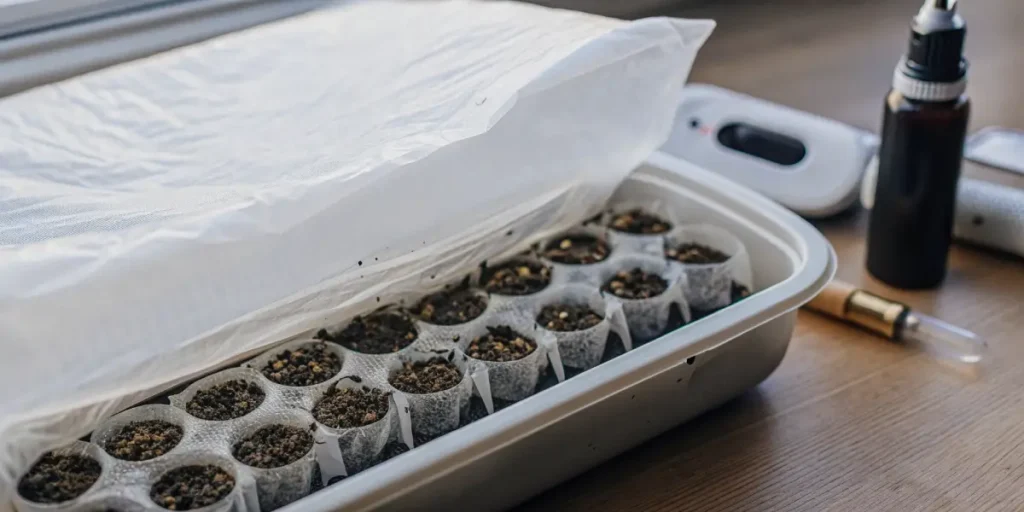
FAQs about Monkey Grease
What are the ideal growing conditions for the Monkey Grease strain?
Monkey Grease thrives in warm, semi-humid environments with temperatures between 70°F and 85°F (21°C–29°C) and humidity levels ranging from 40% to 60%. This hybrid strain prefers nutrient-rich, well-aerated soil or hydroponic systems with a pH between 5.8 and 6.5. Consistent airflow, proper lighting, and CO₂ supplementation can further enhance growth and resin production.
How long does Monkey Grease take to flower?
The Monkey Grease strain typically flowers within 8 to 10 weeks under optimal indoor conditions. During this period, maintaining stable humidity and nutrient levels is critical to maximizing bud density and potency. Outdoor growers can expect harvests around mid-October in temperate climates, depending on regional daylight and temperature variations.
What nutrients work best for cultivating Monkey Grease cannabis?
Monkey Grease plants benefit from a balanced nutrient regimen with higher nitrogen during the vegetative phase and increased phosphorus and potassium during flowering. Organic additives such as bat guano, seaweed extract, or molasses can enhance terpene expression and resin production. Monitoring EC levels and maintaining a steady pH ensures efficient nutrient absorption and prevents deficiencies.
How can I maximize yield when growing Monkey Grease indoors?
To boost yield, implement low-stress training (LST) or a Screen of Green (SCROG) setup to improve light distribution across the canopy. Use high-intensity LED or HPS lights and maintain consistent airflow with oscillating fans. Regular pruning of lower branches promotes energy redirection toward bud sites, resulting in denser and more uniform flower production.
What makes Monkey Grease strain unique compared to other hybrids?
Monkey Grease stands out for its dense, resin-covered buds and a distinct aroma blending earthy, citrus, and diesel notes. Its genetic lineage—combining Gorilla Glue #4 and Grease Monkey—produces a hybrid that balances cerebral euphoria with deep physical relaxation. The strain’s potency, rich terpene profile, and sticky trichomes make it a top choice among both cultivators and concentrate producers.

